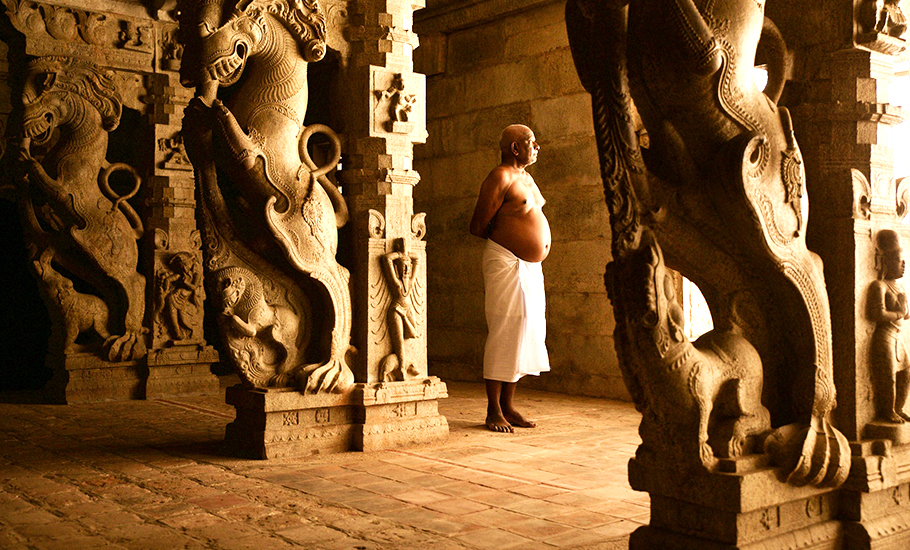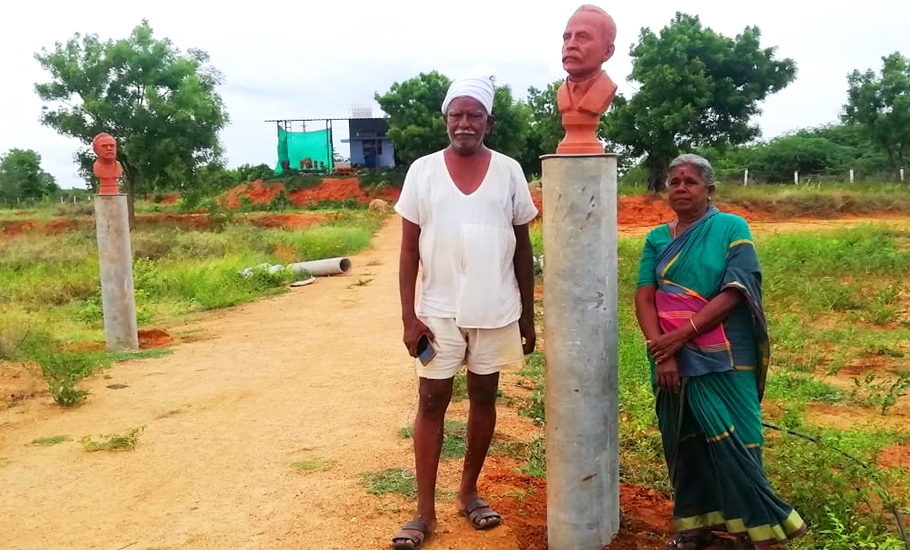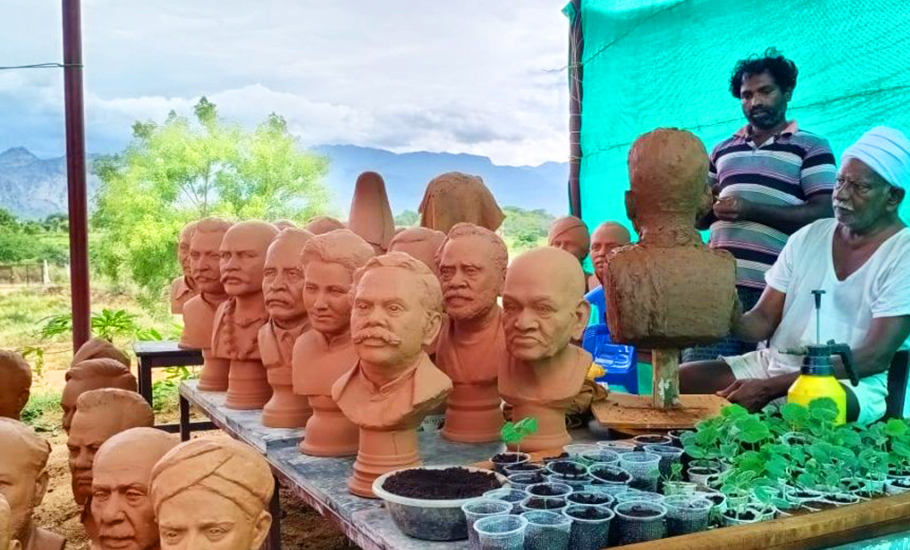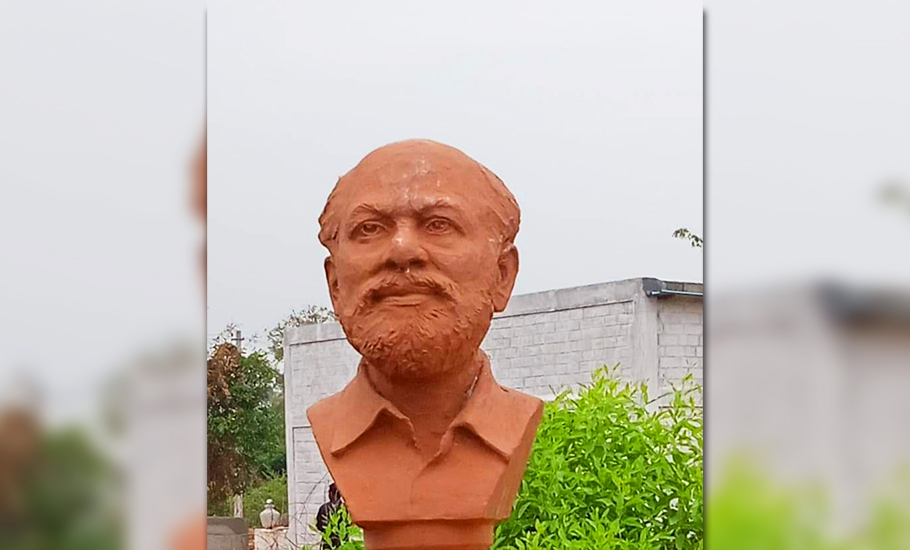
- Home
- News
- Analysis
- States
- Perspective
- Videos
- Education
- Entertainment
- Elections
- World Cup 2023
- Features
- Health
- Business
- Series
- Economy Series
- Earth Day
- Kashmir’s Frozen Turbulence
- India@75
- The legend of Ramjanmabhoomi
- Liberalisation@30
- How to tame a dragon
- Celebrating biodiversity
- Farm Matters
- 50 days of solitude
- Bringing Migrants Home
- Budget 2020
- Jharkhand Votes
- The Federal Investigates
- The Federal Impact
- Vanishing Sand
- Gandhi @ 150
- Andhra Today
- Field report
- Operation Gulmarg
- Pandemic @1 Mn in India
- The Federal Year-End
- The Zero Year
- Premium
- Science
- Brand studio
- Home
- NewsNews
- Analysis
- StatesStates
- PerspectivePerspective
- VideosVideos
- Entertainment
- ElectionsElections
- Sports
- Loading...
Sports - Features
- BusinessBusiness
- Premium
- Loading...
Premium

Guru Vanam: One man’s pursuit to document historical greats out in the open

G Chandrasekaran and his wife Muthulakshmi started planning a quiet retirement pretty early in life. It was the hustle and bustle of Chennai that made them want to escape the city and stay close to nature. The couple cut corners to give shape to their plans. The sacrifices helped as in 2012, when Chandrasekaran, fondly called Chandru, managed to buy five acres of land, on the bank of...
G Chandrasekaran and his wife Muthulakshmi started planning a quiet retirement pretty early in life. It was the hustle and bustle of Chennai that made them want to escape the city and stay close to nature. The couple cut corners to give shape to their plans. The sacrifices helped as in 2012, when Chandrasekaran, fondly called Chandru, managed to buy five acres of land, on the bank of river Thamirabarani in Tamil Nadu’s Ambasamudram, at Rs 30 lakh with his retirement benefits.
Chandru, former principal of Fine Arts College, Chennai Egmore, took an ambitious leap deciding to build this ‘natural environment’ for the two of them and his devout students, all by himself. He decided to plant 2,000 saplings to see them grow into a ‘mini-forest’ around the house he built to stay in with his wife, and a dormitory for his students who would come to visit him.Things went as per plans till 2019 when Chandru decided to turn his ‘mini-forest’ into Guru Vanam where sculptures of historical figures would give company to the saplings, some of which had now become young trees.

It so happened that in 2019 Tirunelveli district collector, Vishnu Venugopalan, came up with the idea to create an open museum in the city, mainly in the parks. The collector wanted 70-year-old Chandru to execute the project since a similar one, initiated by the Tamil Nadu government installing statues in public places of Chennai was a big hit in 2007.

Venugopalan appointed a five-member committee to select personalities and scholars who had contributed immensely to the district so that their sculptures could be added to the park. A list of 60 people, including eminent personalities such as Tamil scholar Tho Paramasivan, was handed over to him.
“The district collector was a bit wary of the list as he felt personalities from certain castes were under-represented. He was concerned it might rekindle caste issues in Tirunelveli. I personally thought contributions of eminent people cannot be looked at from the prism of caste. So, I backed off, but with a vow — I will make 600 statues instead of 60 and that too without the support of the government,” said the artist.
There were many hurdles on the way. The first came from Muthulakshmi.
“I wanted to make a garden on the land we bought. And now you are coming and saying that you are going to make and install bommais [dolls] here,” my wife told me.
“I cajoled her saying I will rename it Muthulakshmi Vanam because I felt very strongly about the need to document the lives of historical legends for the future generations. It took some time and a lot of convincing, but my wife finally relented.”
The challenges ahead were, however, bigger.
Making just one bust-level statue costs anywhere between Rs 50,000 and Rs 80,000 with money involved at each step from clay modelling to the fibre output. “Friends and well-wishers such as filmmaker Pa Ranjith helped me make some of the statues. More than 30 students came forward to help in making them,” he said.
For his students, who lovingly call him Chandru master, helping their teacher in his endeavour was a natural choice.
So far, Chandru has managed to create 54 sculptures.
“We work free of cost in reverence of our master. This is more so because he doesn’t make sculptures of random people. Instead he only tries to document those who have immensely contributed to the society through his art,” said Saran Raj, a Fine Arts student who Chandru once taught.

While Chandru accepts sponsorship, he has refused to compromise on presenting his view of history.
“The statues range from communist leader Vladimir Lenin to G Nammalvar, who contributed to organic farming. Chandru has given a new lease of life to the contributions of Robert Caldwell, a pioneer in the study of the Dravidian languages, Dohnavur Emi Carmel, a missionary who ran an orphanage which saved hundreds of children from sex slavery under the Devadasi system and provided them education,” said Purushothaman, a sculptor who is collaborating with Chandru for the project.
Museums are usually the domain of governments and establishments. An individual creating 54 sculptures on such a scale is a rarity.
“I was surprised to see the statue of Abraham Pandithar, who contributed immensely to Sidha medical practice and Carnatic music,” says Athi Ramanujam, a travel enthusiast who happened to visit the museum.
“Personalities like Kavadi Chindu Annamalai Reddiyar and writer Ki Rajanarayanan have to be taken to the next generation. Most people have forgotten these personalities.
Madurakavi Bharathi Das, who used theatre art form to support the Indian freedom movement, was a surprise finding at the museum. Guru Vanam documents their life, at least as a statue,” Ramanujam told The Federal.
“I would say the open museum is a must visit place for those who come to Tirunelveli.”
While rich praises are coming Chandru’s way from his museum’s visitors, an added bonus was when he got to present some of his creations at the Virudhunagar book fair. In a separate event, his statues were presented to Tamil Nadu Chief Minister MK Stalin in Tirunelveli.
“Tirunelveli collector arranged an exhibition of the statues in the city in September 2021. Tamil Nadu chief minister MK Stalin appreciated the efforts and suggested it should have been in the town for more people to be able to see it, instead of a faraway Guru Vanam,” Chandru told The Federal.
Earlier, Chandru had sculpted 14 statues which are displayed in prominent locations of Chennai.
“I mooted the idea to display folk arts instead of Sangam era personalities such as Avvaiyar, as was suggested to me in 2007. At least personalities of Sangam era literature have had some attention. The then CM M Karunanidhi was open to the idea and accepted the fact that folk art needs attention. Today, you can see Kalaripayattu [a martial art] or Kuravan-Kurathi [artists of Tamil folk art] in Chennai, at least as statues. Unfortunately, I wasn’t able to replicate it in Tirunelveli,” Chandru said.

Even as the former principal rues the fact, he acknowledges that it may not have been possible to build his ‘caste-less’ museum in Tirunelveli. The caste conflict that hit the area in the 1990s had exposed deep fissures which existed in south Tamil Nadu. As caste clashes broke out, many statues were damaged. Statues had to be put behind iron grilles to save them from violent mobs.
“Even though caste conflicts do exist in a metropolitan city like Chennai, people don’t resort to sickle and spill blood over disputes. Looking back, I realise I could not have erected the statues in public places of Tirunelveli,” seeming to reconcile with his creation in the form of Guru Vanam.
Chandru hasn’t just reluctantly reconciled. He has grand plans for Garu Vanam.
“I will install 600 sculptures in the museum,” he says.

